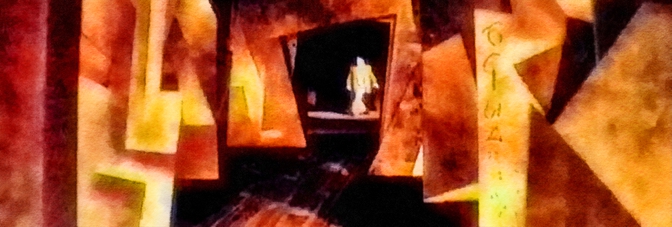Here’s an interesting one. A modern silent drama. When I saw Gance’s Napoleon at Northwestern, someone besides a film professor introduced it. I can’t remember what he did, but he was just a big fan of silent films. In his brief introduction, he talked about how silent films and talkies vary not just by the audio, but by the storytelling methods. The Call of Cthulhu is a silent drama. The goal of the filmmakers (the H.P. Lovecraft historical society) was to adapt the 1920s story in that time period’s film medium. From the language of the title cards to the expressions and make-up of the actors, they succeed.
The silent drama is more of a visual storytelling medium than the talkie. Through the 1930s, when people were getting used to talkies, you still had some of these visuals–communicating information to the audience through a means outside the characters’ experience. A reasonable modern example is the maps (the moving dots) in Raiders of the Lost Ark. It’s not a precise example, but it’s a similar method. While these visuals do not currently “work” in film, in The Call of Cthulhu, they’re brilliant. The original story–I’ve never read any Lovecraft and don’t necessarily plan to do so, but he’s got a lot of great fans (John Carpenter, Guillermo del Toro)–is multi-layered, four or five story timelines going on at once, and the visual storytelling allows easy understanding for the audience.
The film’s official website attests there’s no CG, but some of the direction is obviously influenced by post-1920s work. It’s not disconcerting at all and I only noticed the shots because I watched the film with such mad love. With many of the “location” sequences, there’s raw, brilliant filmmaking innovation. CG has all but done destroyed that sort of innovation (to the point it’s surprising to find out something is not CG), and The Call of Cthulhu certainly shows film needs that innovation–needs that struggle–to achieve. This particular film achieves a whole lot through such innovation.
Though the film is out on DVD and has been reviewed at many mainstream DVD websites, Netflix isn’t carrying it, so it’s $20 from the official website. (You can also get it at Amazon). It’s well-worth the price.

Leave a Reply